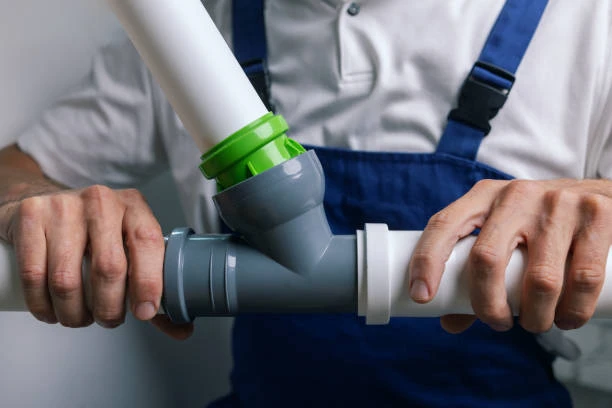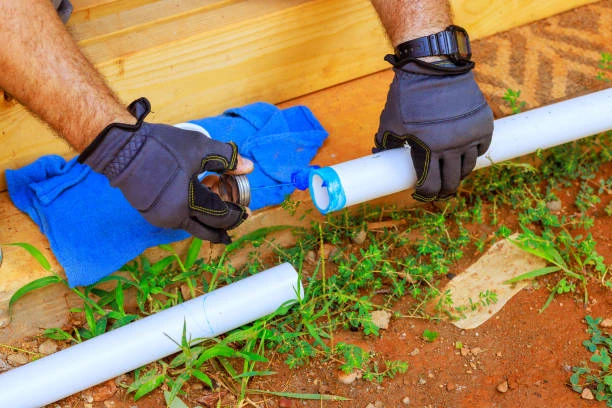India’s PVC pipes and fittings market is one of the fastest-growing segments in the country’s infrastructure and construction sectors. The increasing demand for PVC pipes stems from their affordability, durability, and widespread use in irrigation, water supply, and sanitation. With India’s rapid urbanization and development, the PVC pipes market is poised for significant growth. In this article, we will explore the market’s size, share, and trends by type, with a focus on factors driving this expansion and the role of PVC pipes and fittings in India’s infrastructural development.
What Are PVC Pipes and Fittings?
PVC pipes and fittings come from a type of plastic called polyvinyl chloride, known for its strength, lightweight nature, and resistance to corrosion. People primarily use these pipes in residential, commercial, and agricultural applications, including water supply systems, drainage, irrigation, and sewage lines. Due to their versatility and cost-effectiveness, PVC pipes have become the material of choice for various industries.
India’s PVC Pipe Market Size
The PVC pipes and fittings market in India was valued at approximately USD 3.5 billion in 2023 and is projected to grow at a CAGR (Compound Annual Growth Rate) of around 10% over the next five years. By 2028, the market size is expected to reach over USD 5.5 billion. The growing population, increasing construction activities, and the government’s focus on rural water management projects are key contributors to this growth.
Market Share Analysis by Application
1. Agriculture and Irrigation
Agriculture is a major driver of PVC pipe demand in India, accounting for nearly 40% of the market. PVC pipes are widely used for irrigation systems, including drip and sprinkler irrigation, which are essential for conserving water and improving crop yield in India’s agricultural sector.
2. Water Supply and Sanitation
PVC pipes play a crucial role in water supply and sanitation projects, contributing to around 30% of the market. These pipes are used for potable water supply systems due to their resistance to chemical reactions and durability. The Government of India’s “Jal Jeevan Mission,” which aims to provide safe and adequate drinking water through individual household tap connections, is a major driver for PVC pipe demand in this sector.
3. Construction and Infrastructure
With India’s rapid urbanization, the construction industry has witnessed significant growth, further fueling the demand for PVC pipes. The construction and infrastructure segment represents roughly 20% of the market, primarily for plumbing and drainage systems.
4. Industrial Applications
Industrial sectors such as oil & gas, chemical processing, and power generation contribute to about 10% of the PVC pipe demand. These industries rely on PVC pipes for their chemical resistance, low maintenance, and longevity, making them an ideal choice for transporting corrosive materials.
Types of PVC Pipes and Their Applications
1. uPVC (Unplasticized PVC) Pipes
uPVC pipes, also known as rigid PVC pipes, are widely used in plumbing, drainage, and sewage systems. Their high strength and resistance to pressure make them ideal for transporting water and other fluids over long distances without leakage.
2. CPVC (Chlorinated PVC) Pipes
People use CPVC pipes in hot and cold water supply systems because they offer enhanced temperature resistance. They are common in residential and industrial plumbing systems where water temperatures may exceed the limits for standard PVC pipes.
3. PVC-O Pipes
Engineers design PVC-O (oriented PVC) pipes to handle high-pressure applications, making them suitable for irrigation, industrial fluid handling, and municipal water distribution systems. These pipes offer improved impact resistance and tensile strength compared to conventional PVC pipes.
4. HDPE and LDPE Pipes
Although not strictly PVC, people often consider high-density polyethylene (HDPE) and low-density polyethylene (LDPE) pipes alongside PVC products due to their similar applications. HDPE pipes offer more flexibility and durability, making them suitable for underground installations, while LDPE pipes work well for low-pressure irrigation systems.
Key Trends in the Indian PVC Pipes Market
1. Government Initiatives
The Government of India has launched several initiatives, such as the “Swachh Bharat Mission” and “Smart Cities Mission,” which have accelerated the demand for PVC pipes and fittings in water management and urban development projects.
2. Focus on Water Conservation
With increasing water scarcity, the need for efficient water management systems has become paramount. PVC pipes are integral to modern irrigation systems, helping farmers conserve water and improve agricultural productivity. The government’s push towards micro-irrigation methods, including drip and sprinkler systems, further drives the demand for PVC pipes.
3. Technological Advancements
Manufacturers are adopting new technologies to improve the quality and durability of PVC pipes. Innovations such as PVC-O and multilayered pipes are gaining popularity for their strength, lightweight, and environmental sustainability.
4. Growing Preference for Eco-friendly Solutions
Sustainability is becoming a significant focus in the PVC industry. Companies are investing in recycling technologies and producing eco-friendly PVC products to reduce environmental impact. The use of recycled PVC in pipe manufacturing not only helps conserve resources but also meets the growing demand for sustainable infrastructure solutions.

Challenges in the PVC Pipes and Fittings Market
Despite its growth potential, the PVC pipes market in India faces several challenges. Fluctuating raw material prices, particularly the cost of crude oil, impact the manufacturing costs of PVC pipes. Additionally, competition from alternative materials such as HDPE and PPR pipes, which offer similar benefits, may affect market growth.
Opportunities for Future Growth
The Indian government’s continuous investment in rural and urban infrastructure presents significant opportunities for PVC pipe manufacturers. The increasing focus on irrigation systems, sanitation, and water management will create a robust demand for PVC pipes in the coming years. Moreover, the rise of smart cities and sustainable development projects offers potential for further growth.
Conclusion
The India PVC pipes and fittings market is on a growth trajectory, driven by the agricultural, construction, and infrastructure sectors. With advancements in technology and a focus on sustainability, PVC pipes will continue to play a vital role in India’s development. The market’s future looks promising, thanks to government initiatives and the increasing adoption of efficient water management systems.
FAQs
- What are the main uses of PVC pipes in India?
PVC pipes are primarily used in agriculture for irrigation, in water supply systems, and for drainage and sewage systems in residential and industrial sectors. - Why are PVC pipes preferred over other materials?
PVC pipes are lightweight, corrosion-resistant, cost-effective, and durable, making them ideal for various applications, including irrigation and plumbing. - What is driving the growth of the PVC pipes market in India?
The market is growing due to government initiatives in water management, agriculture, and infrastructure development. - What is the difference between uPVC and CPVC pipes?
uPVC pipes are used for cold water supply and drainage, while CPVC pipes are designed to handle both hot and cold water due to their higher temperature resistance. - What are the emerging trends in the PVC pipes market?
Key trends include the adoption of eco-friendly PVC products, technological advancements in pipe manufacturing, and increased demand for water-efficient irrigation systems.

















